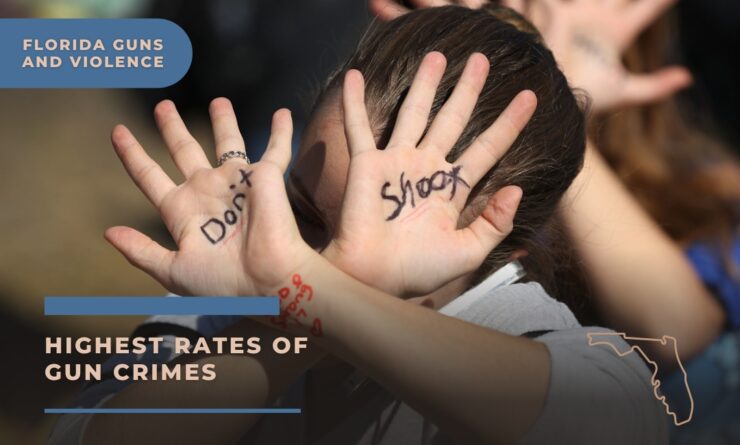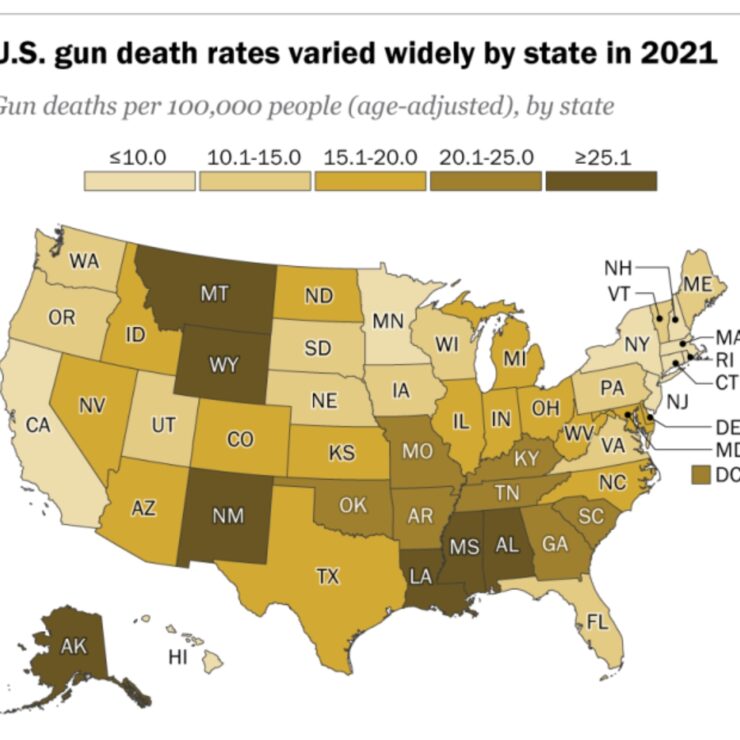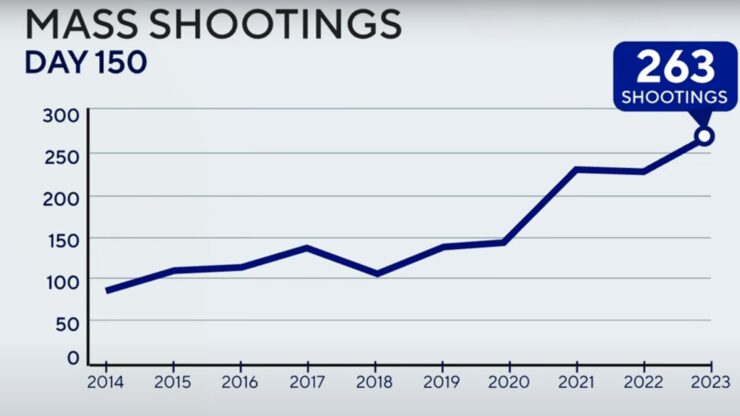Gun violence in Florida is a pressing issue that demands our attention. It’s a complex problem that intertwines with many aspects of society, from mental health and education to poverty and legislation. The impact of gun violence extends beyond the victims and their families, affecting entire communities and the state as a whole.
The importance of discussing gun violence lies in its prevalence and the devastating effects it has on the lives of Floridians. It’s a conversation that involves all of us, as the repercussions of gun violence ripple out to touch every corner of the state. By bringing this issue into the light, we can begin to understand its causes and work towards effective solutions.
In this article, we will delve into the statistics, the societal costs, and the potential strategies to mitigate gun violence in Florida. We aim to provide a comprehensive analysis that will inform and engage readers on this critical issue.
Statistical Overview of Gun Violence in Florida
| Statistics | Florida | Comparison |
|---|---|---|
| Gun Deaths | 2,849 deaths/year | – |
| Gun Injuries | 5,267 injuries/year | – |
| Gun Violence Rate | 19th highest in the US | – |
| Gun Deaths Increase | 15% increase from 2011 to 2020 | – |
| Gun Suicides | 62% of gun deaths | 59% of gun deaths nationwide |
| Gun Homicides | 36% of gun deaths | 38% of gun deaths nationwide |
| Societal Cost of Gun Violence | $40.3 billion/year | $1,878 per resident/year |
| Taxpayer Contribution to Costs | $875.9 million/year | – |
| Gun Homicide Rate | 22nd highest in the US | – |
| Gun Assault Rate | 22nd highest in the US | – |
| Children and Teens Gun Deaths | 206 deaths/year | – |
| Children and Teens Gun Suicides | 30% of gun deaths | 35% of gun deaths nationwide |
| Children and Teens Gun Homicides | 66% of gun deaths | 60% of gun deaths nationwide |
| Intimate Partner Homicides | 59 women fatally shot in 2019 | 67% involved guns |
The current rates of gun violence in Florida are alarming. However, it’s clear that the situation is dire and requires immediate attention.
Historical trends of gun violence in Florida show a disturbing pattern. Numerous reports and studies indicate that gun violence rates have been steadily increasing over the years. This trend underscores the urgent need for effective strategies to address this issue.
Understanding these statistics is crucial in our fight against gun violence. They provide us with a clear picture of the magnitude of the problem and serve as a stark reminder of the lives at stake.
- In an average year, 2,849 people die and 5,267 are wounded by guns in Florida. Florida has the 19th-highest rate of gun violence in the US.
- The rate of gun deaths in Florida increased 15% from 2011 to 2020, compared to a 33% increase nationwide. The rate of gun suicides decreased 1% and gun homicides increased 40% compared to a 12% increase and 70% increase nationwide, respectively.
The Societal Cost of Gun Violence
The societal cost of gun violence in Florida is immense. It’s not just about the lives lost, but also the economic impact and the toll it takes on communities and families. The exact figures are hard to come by, but it’s evident that the cost is substantial.
The economic impact of gun violence includes healthcare costs for victims, law enforcement and criminal justice expenses, and lost income potential. These costs are borne by all Floridians, either directly or indirectly.
The impact on communities and families is even more devastating. The trauma of losing a loved one to gun violence or living in fear of it happening can have long-lasting psychological effects. It can also contribute to a cycle of violence and poverty that is difficult to break.
- Florida has the 25th-highest societal cost of gun violence in the US at $1,878 per resident each year.
- Gun deaths and injuries cost Florida $40.3 billion each year, of which $875.9 million is paid by taxpayers.
Comparison of Florida’s Gun Violence Rates to Other States
Comparing Florida’s gun violence rates to other states provides valuable insights. Unfortunately, the data needed for a comprehensive comparison is not readily available. However, it’s known that Florida’s situation is among the most severe in the country.
The factors contributing to Florida’s ranking are complex and multifaceted. They include the state’s gun laws, socio-economic conditions, and the prevalence of firearms. Understanding these factors is crucial in devising effective strategies to reduce gun violence.
The Relationship Between Firearm Prevalence and Violent Crime
The relationship between firearm prevalence and violent crime in Florida is a contentious issue. Some argue that more guns lead to more crime, while others contend that firearms are a deterrent to crime. The truth likely lies somewhere in between, with the relationship being influenced by a host of other factors.
Analyzing firearm prevalence in Florida is challenging due to the lack of comprehensive data. However, it’s clear that firearms are widespread in the state. This prevalence, combined with other factors like socio-economic conditions and mental health issues, contributes to the state’s high rates of gun violence.
Understanding the correlation between firearm prevalence and violent crime rates is crucial. It can inform policy decisions and help target interventions where they are most needed.
Gun Deaths in Florida: A Closer Look
Taking a closer look at gun deaths in Florida, we find a tragic pattern of loss and violence. The breakdown of gun deaths reveals a complex picture that includes homicides, suicides, and accidental shootings. Each of these categories represents a different facet of the gun violence problem and requires a unique approach to address.
The human stories behind these statistics are heart-wrenching. They are stories of lives cut short, families torn apart, and communities living in fear. These stories underscore the urgency of addressing gun violence in Florida.
While the exact figures are difficult to obtain, it’s clear that gun deaths in Florida are a significant problem. Each death is a tragedy, and each statistic represents a failure to protect our citizens. It’s a sobering reminder of the work that lies ahead.
In Florida, 62% of gun deaths are suicides and 36% are homicides. This is compared to 59% and 38% nationwide, respectively.
Research: Key Findings
Research on gun violence is a critical tool in our fight against this issue. It provides us with valuable insights into the causes of gun violence and potential strategies to address it. Unfortunately, the data on recent research on gun violence is not readily available. However, numerous studies have been conducted on this issue, and their findings are enlightening.
These studies reveal a complex interplay of factors contributing to gun violence. They include socio-economic conditions, mental health issues, the prevalence of firearms, and the effectiveness of gun control laws. Understanding these factors is crucial in devising effective strategies to reduce gun violence.
Mass Shootings vs. Individual Homicides
When we talk about gun violence, it’s important to distinguish between mass shootings and individual homicides. While both are tragic and unacceptable, they represent different aspects of the gun violence problem and require different approaches to address.
Mass shootings are highly publicized events that cause widespread fear and trauma. They are often carried out with high-capacity firearms and result in multiple casualties. In contrast, individual homicides are typically less publicized but are far more common. They often involve handguns and occur in the context of domestic violence, gang violence, or other criminal activity.
The factors contributing to mass shootings and individual homicides are also different. Mass shootings are often linked to mental health issues, radicalization, and the availability of high-capacity firearms. Individual homicides, on the other hand, are more often associated with socioeconomic conditions, interpersonal conflicts, and the prevalence of handguns.
Gun Homicides and Assaults
- Every year, an average of 1,057 people in Florida die by gun homicides and 1,803 are wounded by gun assaults—a rate of 5.5 homicides and 8.4 assaults per 100,000 people. Florida has the 22nd-highest rate of gun homicides and gun assaults in the US. In Florida, 76% of all homicides involve a gun, compared to 76% nationwide.
Children and Teens Gun Deaths
- Guns are the 2nd-leading cause of death among children and teens in Florida. In Florida, an average of 206 children and teens die by guns every year, of which 30% of these deaths are suicides and 66% are homicides. In the US, 35% of all gun deaths among children and teens are suicides and 60% are homicides.
Intimate Partner Homicides
- In 2019, 59 women were fatally shot by an intimate partner in Florida. 67% of female intimate partner homicide victims were killed with a gun, compared to 67% nationwide.
Gun Control Debates and Their Impact on Florida
⚖️ Florida’s Governor Ron DeSantis signs HB543 into law, allowing permitless carry of weapons creating even more debate on gun control and public safety.#guncontrol #safety #desantis #florida #law #constitution #permit #permitless #26 #publicsafety #news pic.twitter.com/YxDiUcjuAQ
— @BetterCall_Shaf (@BetterCall_Shaf) April 4, 2024
The debate over gun control is a contentious issue in Florida. The state has a strong tradition of gun ownership, and many Floridians view gun control measures as an infringement on their rights. However, with the high rates of gun violence in the state, there is a growing call for more effective gun control laws.
The current gun control laws in Florida are a patchwork of state and federal regulations. They include background checks for gun buyers, restrictions on the sale of certain types of firearms, and laws aimed at keeping guns out of the hands of criminals and the mentally ill. However, many argue that these laws are not enough and call for more stringent measures.
The effectiveness of Florida’s gun control laws is a matter of debate. Some argue that the laws are too lax and contribute to the high rates of gun violence in the state. Others contend that the problem lies not with the laws themselves but with their enforcement. This debate is a crucial part of the conversation on gun violence in Florida and will likely shape the state’s approach to this issue in the future.
Here, you can read more about some of the most dangerous cities in Florida, providing valuable insights into their crime rates and safety concerns.
Conclusion
Addressing gun violence in Florida is a complex task that requires a multifaceted approach. It involves not only law enforcement and legislation but also education, mental health services, and community initiatives. The strategies for reducing gun violence in Florida must be comprehensive and targeted to address the specific factors contributing to this issue in the state.
One potential strategy is strengthening gun control laws. This could include measures like universal background checks, restrictions on the sale of high-capacity firearms, and laws to keep guns out of the hands of those deemed a risk to themselves or others. However, any such measures must be balanced against the rights of law-abiding gun owners.
















